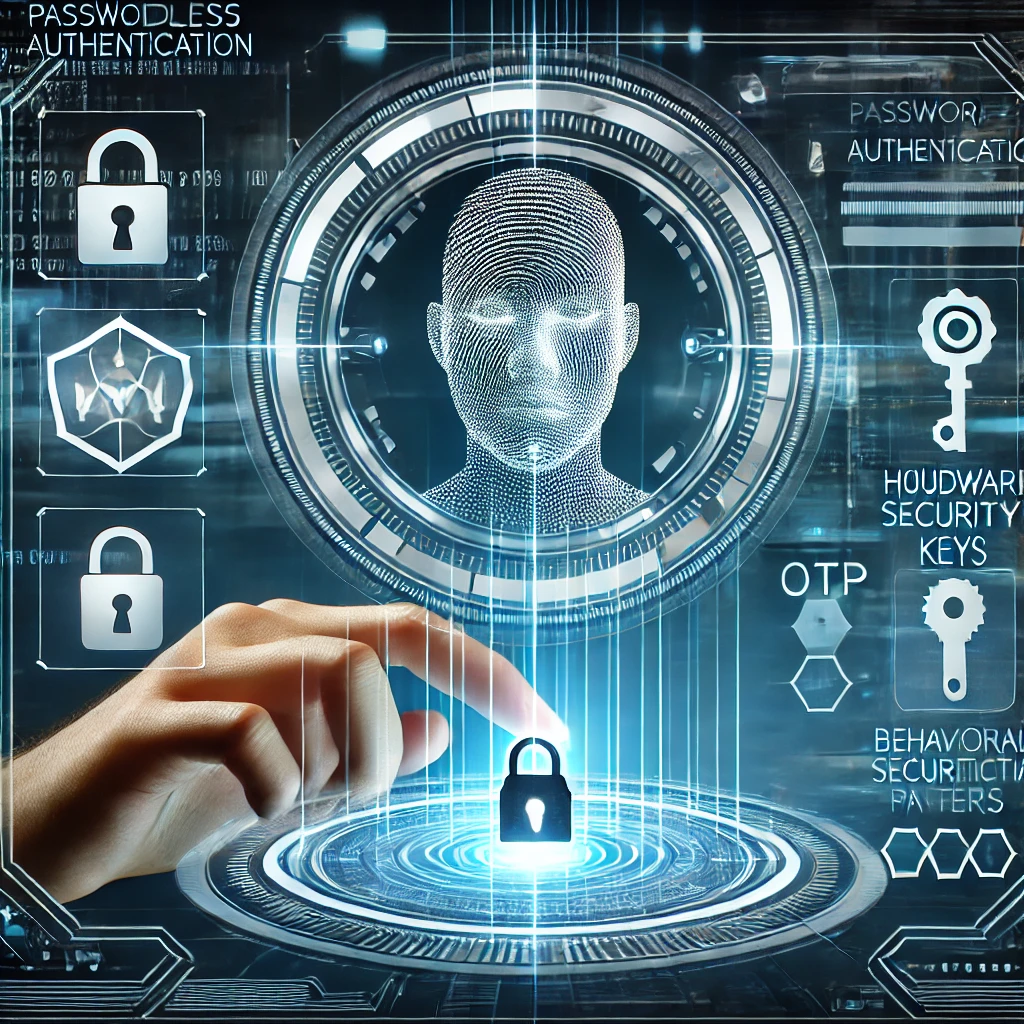Introduction
In today’s digital landscape, traditional password-based authentication is proving to be increasingly inadequate. With cyber threats on the rise and data breaches becoming more frequent, organizations and individuals are looking for more secure and user-friendly authentication methods. Passwordless authentication is emerging as the next-generation security solution, offering a seamless and highly secure way to access digital services. This article explores passwordless authentication, its benefits, technologies, and future implications.
Understanding Passwordless Authentication
Passwordless authentication eliminates the need for traditional passwords, replacing them with more secure and convenient methods such as biometrics, one-time passcodes (OTPs), authentication apps, and hardware tokens. This approach reduces the risk of credential theft and phishing attacks, enhancing both security and user experience.
Why Traditional Passwords Are Failing
- Security Risks: Passwords are vulnerable to hacking, brute-force attacks, and phishing scams.
- User Frustration: Managing multiple passwords leads to poor security habits, such as reusing passwords or storing them insecurely.
- High Maintenance Costs: Organizations spend significant resources on password resets and security measures to protect user credentials.
- Compliance Challenges: Meeting security and privacy regulations with password-based authentication can be complex and resource-intensive.
Key Technologies Behind Passwordless Authentication
1. Biometric Authentication
Biometrics use unique physical or behavioral traits to verify identity. Common biometric methods include:
- Fingerprint Recognition: Scans and verifies fingerprints.
- Facial Recognition: Uses AI-driven facial mapping for authentication.
- Voice Recognition: Identifies users based on vocal patterns.
- Iris and Retina Scanning: Analyzes eye patterns for secure identification.
2. Multi-Factor Authentication (MFA) Without Passwords
Passwordless MFA enhances security by requiring multiple authentication factors, such as:
- Smartphone Authentication Apps (e.g., Google Authenticator, Microsoft Authenticator)
- Push Notifications (e.g., approving login attempts via mobile devices)
- SMS or Email OTPs (though vulnerable to interception, still commonly used)
3. FIDO2 and WebAuthn Standards
The Fast Identity Online (FIDO2) and Web Authentication (WebAuthn) standards enable passwordless authentication using public-key cryptography. Supported by major platforms like Windows, Android, and iOS, FIDO2 allows users to log in using:
- Hardware Security Keys (e.g., YubiKey, Google Titan Key)
- Built-in Device Authentication (e.g., Windows Hello, Apple Face ID)
4. Behavioral Authentication
Behavioral authentication analyzes user actions such as keystroke dynamics, mouse movements, and device usage patterns to verify identity continuously, without requiring explicit authentication steps.
5. Magic Links
Magic links allow users to authenticate by clicking a unique, time-sensitive link sent to their registered email or phone, eliminating the need for passwords.
Benefits of Passwordless Authentication
- Enhanced Security: Reduces the risk of phishing, credential stuffing, and brute-force attacks.
- Improved User Experience: Eliminates password-related frustration and login delays.
- Lower IT Costs: Reduces expenses associated with password management and recovery.
- Better Compliance: Meets security standards like GDPR, CCPA, and HIPAA more effectively.
- Scalability: Works across different platforms and devices, improving accessibility.
Challenges of Implementing Passwordless Authentication
Despite its advantages, passwordless authentication faces several challenges:
- Adoption Barriers: Users and organizations may resist transitioning from familiar password-based systems.
- Device Compatibility: Not all devices support advanced authentication methods like biometrics or security keys.
- Privacy Concerns: Storing biometric data raises security and ethical concerns.
- Backup and Recovery: Users need alternative authentication methods in case of lost devices or hardware failures.
Industries Adopting Passwordless Authentication
- Banking & Finance: Secure transactions with biometric authentication and FIDO2 keys.
- Healthcare: Protects patient data and ensures HIPAA compliance.
- Enterprise Security: Enhances workforce authentication with passwordless SSO (Single Sign-On).
- E-commerce: Improves checkout security and reduces cart abandonment.
- Government & Defense: Strengthens security in critical infrastructure and national security applications.
Future of Passwordless Authentication

As cybersecurity threats evolve, passwordless authentication is expected to become the standard for secure access. Innovations in AI-driven authentication, decentralized identity systems (such as blockchain-based credentials), and continuous authentication models will further enhance security and usability.
Conclusion
Passwordless authentication is revolutionizing digital security by offering a more secure and user-friendly alternative to traditional passwords. With advancements in biometrics, cryptographic authentication, and behavioral analytics, organizations can significantly reduce security risks while improving user experiences. The future of authentication is passwordless, and businesses that adopt these technologies early will gain a competitive edge in security and efficiency.




